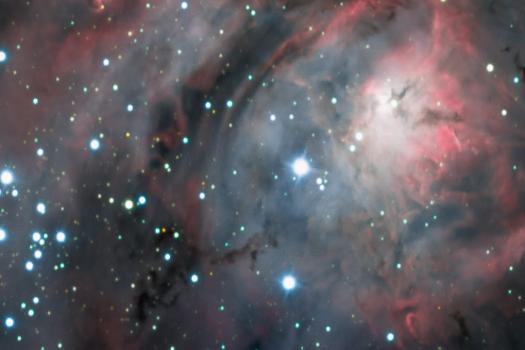Stars and Constellations
- Lesson Plan
- Feedback Form
What are stars and constellations? Learn and explore in this activity.
5-ESS1-1
Support an argument that differences in the apparent brightness of the sun compared to other stars is due to their relative distances from Earth.
Materials Needed
- Toothpicks
- Spaghetti
- Regular marshmallows
- Mini marshmallows
- Other materials of your choice (or substitutions)
- Edpuzzle interactive video OR Kahoot quiz and video
- Flipgrid video or photo (Optional)
Background
Our sun is a star. How is it different than other stars? Other stars are very, very, far away so they appear as small lights in the night sky. Stars are always shinning in our sky, but we can only see them when our sun’s bright light is not shinning (at night).
Stars vary in size and temperature. Our sun is an average-size star. When we look at stars at night their relative brightness depends on two things, how far away they are and what size they are. Brighter stars are either closer to Earth or quite large, or both.
A constellation is a grouping of stars. Constellations are useful for astronomers, both professional and amateur, to navigate their way around the sky. Constellations have allowed humans to chart the sky into visible patterns of stars for thousands of years. Most cultures have created fascinating constellation myths and stories.
We see constellations in 2-D as if their pattern was on a sheet of flat paper. In fact, the distances between stars in constellations can be vast. Constellations are patterns that can only be seen from Earth. From other places in space, they would no longer appear as a group.
Since the Earth rotates around its axis every 24 hours, the stars appear to move through the sky. Actually, we are moving.
Students will learn about these concepts and then create their own constellations, helping them to understand Earth and Space science.
Directions
- What is our sun? A star! Why does it appear so bright? It is so much closer than any other star.
- EITHER… Watch this video on YouTube as a class and complete the fun informal assessment Kahoot style. Discuss questions that are missed and correct misunderstandings.
- What are stars and constellations? https://www.youtube.com/watch?v=adKrNga8-Qs
- Kahoot: https://create.kahoot.it/share/69a11423-50e8-42b0-be63-2606a41c528f
- OR…Have your students watch the video about stars and constellations independently and answer the questions that pop up on the right of the video in this EdPuzzle.
- What are stars and constellations? Why questions for kids. https://edpuzzle.com/media/5f6ba673daad994094f1fe01
- Now comes the fun part, students will be making your own constellation. Tell students they will be creating their own constellation. Encourage students to think about concepts they learned in the videos and discussion to represent in their constellations.
- Ask students to look at their constellation and consider this question: Are the stars that make up a constellation really on the same plane? Do they exist next to each other like on a flat surface?
- Continue to ask your students questions and point them in this direction: Constellations are composed of stars that are near and far to us.
- Explain that within one constellation, some stars maybe thousands of light-years away from each other, but they look like they are in the same plane. Additionally, stars in constellations are of different sizes. Some are very large, some are smaller.
- Now challenge students to add depth to their constellation and thereby capture this concept in their model.
- Students can transform their current 2-D constellation by poking toothpicks and spaghetti to build the constellation upwards. They are on the Earth viewing their constellation, and now they can see that some stars are closer and some are farther away, some stars are bigger and some are smaller.
- Provide these materials or ask your student to find them in their home. Substitutions can easily be made. Get out toothpicks and/or spaghetti and mini marshmallows. Have students create their own constellation. You can ask students to be creative and create a new constellation or give them a pattern of a real constellation to create, such as the big dipper or Orion.
- Remind students that stars are many different sizes and distances from Earth. Brighter stars in our night sky are either larger stars (very very big) or closer to Earth (perhaps millions of light-years closer). Use large marshmallows to add in bright or close stars.
- Once students have finished, have them send in a photo of their creation or have students upload a short video on Flipgrid (https://info.flipgrid.com/). If doing a video, ask students to describe which stars in their constellation appear brightest to us on Earth? Why? And to describe why the 3-D model is a better representation of a constellation than a 2-D model.
- They should discuss how the large marshmallows represent big, bright stars.
- They should discuss how constellations are not flat, only appear flat in our sky because we cannot view the vast distances between stars.
- They should discuss how a 3-D model of a constellation is a better model because it shows us how constellations are not flat.
| Attachment | Size |
|---|---|
| 248.19 KB |

